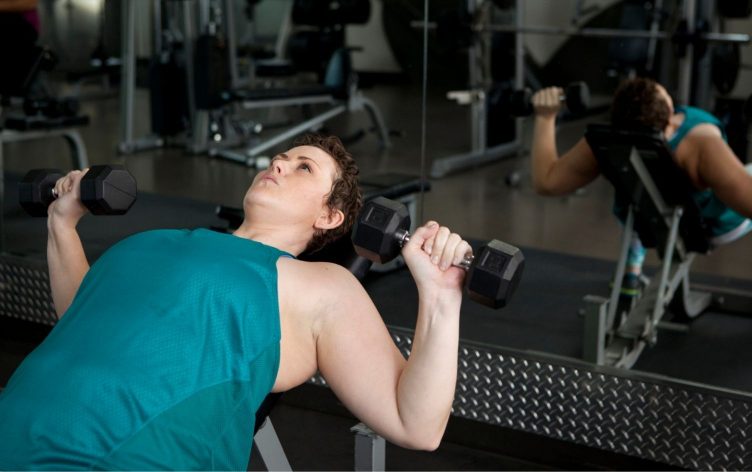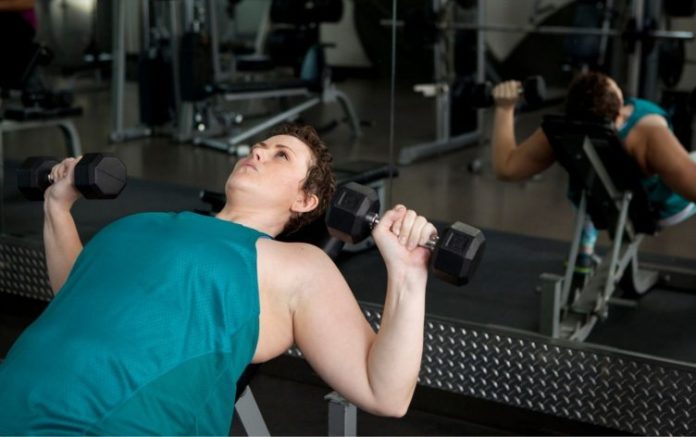
When you start an exercise program, it’s natural to want to know when you’ll start to see the product of all your hard work. But there’s another reason it’s key to have an idea of how long it’ll take to start seeing progress. “Having an approximate timeline for seeing results is important so you don’t get frustrated and quit right before the magic starts to happen,” says Margie Clegg, a certified personal trainer.
Knowing how long progress takes can also help you set realistic goals, which increases your chances of fitness success. “Making goals specific and attainable will allow you to properly set expectations, which can help prevent you from becoming demotivated by setting a rather lofty goal that quickly becomes daunting,” says Joshua Bonhotal, MS, a certified strength and conditioning coach and vice president of operations at Future. That doesn’t mean you can’t set big goals, but understanding the timeline helps you do so in a way that’s more likely to end in accomplishing what you set out to do.
How long it takes to start seeing progress depends on your specific goal. Exact rates of progress vary from person to person based on age, gender, weight, genetics and more, but here’s what fitness pros say to expect in terms of rates of progress for the most common fitness goals — based on research and their years of experience.

“Your rate of weight loss is determined by many factors,” explains Salman Kassam, a certified personal trainer and co-founder of Salecca. “These include starting weight (more overweight people are more likely to experience larger initial drops in weight), adherence to your plan and how steep your calorie deficit is.” These factors ultimately contribute to your energy balance or the number of calories your body is taking in versus how many it’s burning.
When your calorie burn is higher than the number of calories you consume, this is called a calorie deficit, which results in weight loss. The bigger the deficit, the faster the weight loss. Exercise can contribute to your total calorie burn and help you preserve muscle while you lose fat, but for most people, it’s not enough to tip the scale on its own.
That said, some people see weight loss right away when they start exercising, especially if they change their eating habits at the same time. “When you first enter a calorie deficit, it’s normal to experience a large weight drop in the first week or two,” Kassam notes. “This is largely due to a drop in glycogen (carbohydrate stored in the muscle), food volume in the stomach, and even reduced inflammation if food quality has improved.” People often get discouraged when they can’t maintain this rate of weight loss. “It’s important to remember that only a small amount of weight lost in this stage is fat,” Kassam adds.
For lasting weight-loss progress, it typically takes around four weeks to start noticing results and around 12 weeks to see significant results, according to Clegg.

Good news if you’re just starting to lift weights: “The beauty of starting a resistance training program is that strength gains can come amazingly fast in the beginning,” Clegg says. “This is because the neuromuscular system quickly adapts to the new demands you are putting on it. A beginner can easily get stronger from one workout to the next.”
But as you get more advanced with a strength-training regimen, gains slow down. That’s because it takes more time for your muscles themselves to get stronger. If you want to keep progressing, Clegg recommends utilizing progressive overload (adding more weight or repetitions each workout) and working the same muscle group at least twice a week. Both strategies have been shown to be effective at improving strength.

“While you may notice an almost immediate difference in muscle size post-workout due to swelling, this is not muscle growth,” say Chris and Heidi Powell, celebrity trainers from ABC’s Extreme Weight Loss. That temporary swelling is what some refer to as a muscle “pump.”
Real muscle growth takes time, sufficient calories and consistency, they explain. “Without all three of these, increased muscle mass will be hard to come by. It can take between 4–8 weeks for many to notice real muscle growth, but for others, growth can happen as quickly as three weeks from the beginning of proper exercise and nutrition protocol.”
Similar to making strength gains, strength-training beginners have an advantage when it comes to building muscle. “Especially as you become more advanced, careful attention to lifestyle factors, nutrition and recovery will become increasingly important,” Bonhotal says. “In order to continue making gains, it will likely mean placing greater stress on your body over time relative to where you started. This will require a far greater emphasis on factors impacting your body’s ability to recover and adequately adapt to the stress.”
The takeaway: Gaining muscle as an experienced exerciser takes longer. But you can increase your chances of success, and potentially put muscle on faster if you pay attention to good nutrition and getting enough sleep.

Just like gaining strength and muscle, you can build endurance relatively quickly as a beginner. “You should see improvements with something like jogging from session to session for the first part of your journey,” Kassam says.
He points to a study done by NASA, which shows that in just eight days of endurance exercise training, blood volume increased. “This carries over to greater cardiac output and therefore aerobic capacity,” Kassam explains.
These changes may also happen on an even deeper level in the early days of endurance training. In one study, researchers found RNA and proteins important for skeletal muscle adaptation and aerobic capacity respond in as little as one exercise session. “These changes, which happen at a genetic level, continued over the first week of exercise,” Kassam says.
“The bottom line is that physiological adaptations will happen from the first session and will continue as you become more advanced. Markers of progress you may want to track include heart rate and time to exhaustion.”

Some health benefits of exercise take effect right away. “Your brain can see immediate benefits from exercise including an improved mood, decreased anxiety and better mental clarity,” Clegg says.
Other health benefits may require more of a time investment, though. It takes 1–3 months of regular exercise — at least 30 minutes of moderate-intensity exercise 5–7 days per week — to start to see health improvements such as lower blood pressure and more controlled blood sugar,” Clegg says. “And it’s important to note that these benefits are only sustained with regular exercise.” So, for lasting health benefits, it’s crucial to stay consistent with your workouts.
Unlock an experience that’s like having a dietitian, trainer and coach at your fingertips. Sign up for Premium for expert guidance and tools to help you reach your personal health goals.
















